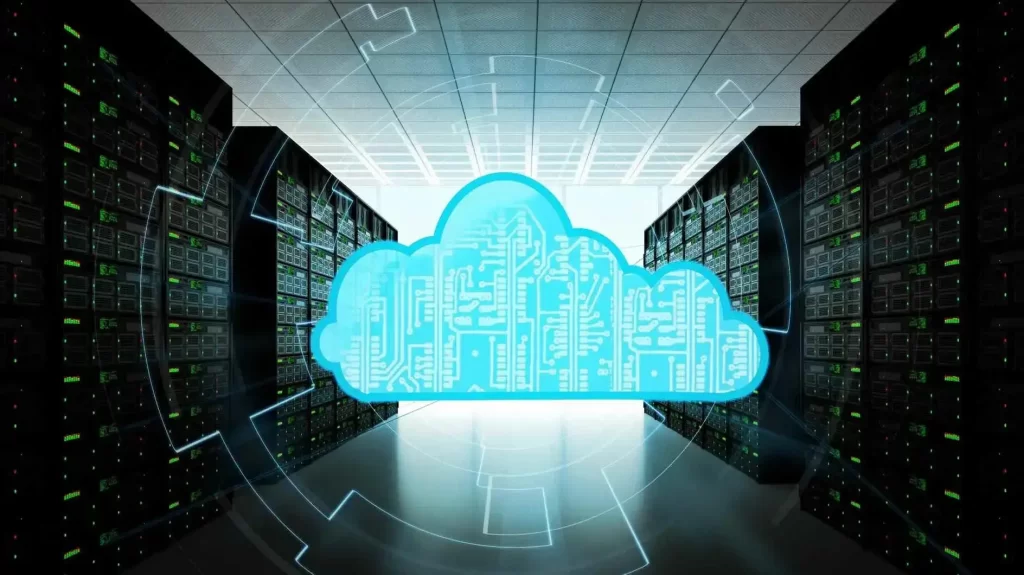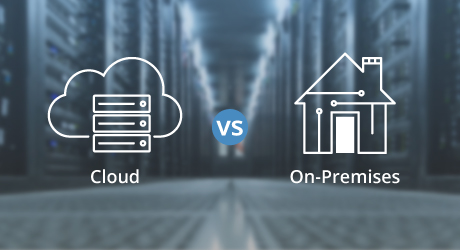When it comes to choosing the right data center for your business, the decision often comes down to two main options: on-premises and cloud data centers. Each has its own unique set of advantages and challenges, making it crucial to understand which one fits your specific needs. Whether you’re looking for greater control over your infrastructure or seeking scalability and cost-efficiency, this article will explore the key differences, benefits, and considerations to help you make an informed decision. Let’s dive in and find out which data center option suits your business best.
Here’s a table summarizing the key differences, pros, and cons between On-Premise Data Centers and Cloud Data Centers, to help businesses make an informed decision:
| Aspect | On-Premise Data Centers | Cloud Data Centers |
|---|---|---|
| Ownership & Location | Owned and operated by the organization, located within its own facilities. | Managed by third-party providers, hosted off-site, and accessed via the internet. |
| Control & Customization | Provides complete control over infrastructure, hardware, software, and security. | Limited control and customization; services are standardized. |
| Scalability | Scaling requires significant upfront investment in hardware and infrastructure. | Highly scalable with on-demand resources, allowing businesses to adjust quickly based on demand. |
| Cost Structure | High upfront capital expenses for hardware, facilities, and maintenance. Ongoing operational costs. | Pay-as-you-go model, reducing initial costs but could lead to higher long-term expenses. |
| Security | Enhanced security with direct oversight and control. Customizable to meet specific security needs. | Potential security risks with third-party management, but providers implement strong security. |
| Maintenance & Management | Requires dedicated IT staff for ongoing maintenance, upgrades, and monitoring. | Cloud provider handles maintenance, upgrades, and monitoring, reducing internal IT burden. |
| Accessibility | Limited to physical access at the on-premise location. | Data and applications are accessible from anywhere with internet access. |
| Latency | Typically lower latency due to local infrastructure. | May experience higher latency depending on location and internet speed. |
| Compliance & Regulations | Easier to implement specific compliance measures and industry regulations. | Depends on the cloud provider’s certifications and adherence to regulations. |
| Disaster Recovery | Requires in-house disaster recovery plans, backup systems, and redundancy. | Cloud providers often have built-in disaster recovery and backup solutions. |
| Environmental Impact | Larger energy consumption, potentially requiring cooling systems and more physical resources. | Cloud providers are increasingly adopting sustainable practices and renewable energy sources. |
Pros & Cons of On-Premise and Cloud Data Centers
| Data Center Type | Pros | Cons |
|---|---|---|
| On-Premise Data Centers | – Complete control over infrastructure and data. – Customization flexibility. – Enhanced security with direct management. – Low latency. |
– High initial investment in hardware and infrastructure. – Ongoing maintenance and updates. – Limited scalability. – Risk of downtime. |
| Cloud Data Centers | – Cost-efficient with a pay-as-you-go model. – Easy scalability with on-demand resources. – Global reach with better disaster recovery options. |
– Less control over infrastructure. – Security concerns with third-party management. – Ongoing recurring costs. – Dependent on internet connectivity. |
Advantages of Cloud Data Centers
| Advantage | Explanation |
|---|---|
| Cost Efficiency | Eliminates the need for significant upfront investment in hardware and allows businesses to pay only for resources used, which is especially helpful for small or growing businesses. |
| Scalability | Cloud data centers offer on-demand resources, enabling businesses to scale up or down quickly without the need for purchasing and installing new hardware. |
| Global Reach | Cloud providers operate data centers worldwide, allowing businesses to host data closer to users, improving performance and reducing latency. |
| Simplified Maintenance | Cloud providers manage hardware and software updates, reducing the burden on in-house IT teams, allowing them to focus on strategic initiatives. |
Disadvantages of Cloud Data Centers
| Disadvantage | Explanation |
|---|---|
| Security Risks | Storing sensitive data on cloud servers raises concerns about breaches and cyberattacks, and businesses must rely on third-party providers to ensure data protection. |
| Dependence on Internet | Cloud data centers require constant internet access. Any internet outage or connectivity issue can cause disruptions in service. |
| Limited Customization | Cloud services offer standardized solutions, and businesses may face challenges when their needs require highly customized or complex infrastructure configurations. |
| Ongoing Costs | Though cloud solutions have low initial costs, the recurring pay-as-you-go charges can add up over time, especially for businesses with high or continuous resource usage. |
Advantages of On-Premise Data Centers
| Advantage | Explanation |
|---|---|
| Complete Control | Businesses have full control over their infrastructure, allowing them to customize hardware, software, and security to meet their specific needs and compliance standards. |
| Enhanced Security | With on-premise data centers, businesses have direct oversight of physical and cybersecurity measures, reducing the reliance on third-party vendors. |
| Customization Flexibility | Businesses can choose specific hardware and software configurations, optimizing performance, capacity, and security according to their exact requirements. |
| Low Latency | On-premise infrastructure provides faster data access and transmission speeds, which is especially important for real-time processing applications. |
Disadvantages of On-Premise Data Centers
| Disadvantage | Explanation |
|---|---|
| High Initial Investment | Setting up an on-premise data center requires a significant upfront capital investment in hardware, software, and physical space. |
| Ongoing Maintenance | Regular maintenance, updates, and monitoring require dedicated IT personnel, and could be resource-intensive. |
| Limited Scalability | Scaling on-premise data centers requires purchasing new hardware and installing it, which can be time-consuming and expensive. |
| Risk of Downtime | On-premise data centers may face unplanned downtimes from hardware failures, power outages, or physical disasters, necessitating complex disaster recovery plans. |
On-Premise and Cloud Data Center Basics
When considering data centers, businesses typically choose between two main types: on-premise and cloud. Each has its unique features that cater to different business needs. Here’s a basic overview of both:
Basics of On-Premises Data Centers
On-premises data centers involve businesses owning and operating their own infrastructure, typically housed within their own facilities. This model provides complete control over the data, hardware, and security measures. Companies can customize their systems to meet specific needs, from compliance requirements to performance optimizations. However, the On-Premises Cloud Difference lies in the higher upfront costs for hardware and facility setup. Additionally, organizations are responsible for ongoing maintenance and upgrades, requiring dedicated IT staff. Scalability can also be a challenge, as expanding capacity requires significant investment in new equipment.
Basics of Cloud Data Centers
Cloud data centers are operated by third-party providers, offering businesses scalable and flexible infrastructure hosted off-site. These centers provide services like Infrastructure as a Service (IaaS), allowing companies to rent resources as needed without large capital investments. The On-Premises Cloud Difference is most noticeable in the cost structure, as cloud solutions operate on a pay-as-you-go model. Cloud data centers also offer high scalability, enabling organizations to quickly adjust resources based on demand. However, businesses give up some control over infrastructure and must rely on cloud providers to manage security, compliance, and performance.
Read more: How to Find Stranded Capacity in Your Data Center
On-premise vs. Cloud Data Centers
What kind of data center is best for your company? Is it better to utilize the fast and practical features of a cloud facility, or a physical on-premise one you can control day and night. What’s the main On-Premises Cloud Difference you should know? Here is a complete comparison between the two:
Similarities
Both on-premises and cloud data centers aim to provide reliable, secure, and efficient environments for data storage and processing. They utilize similar foundational technologies, such as virtualization, to manage workloads effectively. Additionally, both models require robust security measures to protect sensitive information.
Differences
- Location and Ownership: On-premises data centers are owned and operated by the organization within its own facilities. In contrast, cloud data centers are managed by third-party providers and accessed over the internet.
- Control and Customization: On-premises setups offer greater control over hardware and software configurations, allowing for tailored solutions. Cloud environments, however, provide standardized services with limited customization options.
- Scalability: Cloud data centers offer on-demand scalability, enabling businesses to adjust resources as needed without significant upfront investment. On-premises data centers require purchasing and installing additional hardware to scale, which can be time-consuming and costly.
Pros and Cons
On-Premises Data Centers
-
Pros:
- Control: Complete oversight of infrastructure and data.
- Customization: Ability to tailor systems to specific business needs.
- Security: Potentially enhanced security measures due to direct management.
-
Cons:
- High Initial Costs: Significant capital investment in hardware and facilities.
- Maintenance: Ongoing responsibility for upkeep and updates.
- Limited Scalability: Challenges in quickly adapting to changing demands.
Cloud Data Centers
-
Pros:
- Cost Efficiency: Reduced upfront costs with pay-as-you-go pricing models.
- Scalability: Easy to scale resources up or down based on demand.
- Accessibility: Access data and applications from anywhere with an internet connection.
-
Cons:
- Less Control: Limited ability to customize infrastructure.
- Data Security Concerns: Potential risks associated with storing data off-site.
- Ongoing Costs: Recurring expenses that can accumulate over time.
In summary, the choice between on-premises and cloud data centers depends on factors such as control, customization, scalability, cost, and security requirements. Assessing your organization’s specific needs and resources will help determine the most appropriate data center model.
Advantages of Cloud Data Centers
- Cost Efficiency: Cloud data centers eliminate the need for significant upfront investment in hardware, allowing businesses to reduce capital expenses. With a pay-as-you-go model, companies only pay for the resources they use, making this a more financially flexible option, especially for small or growing businesses.
- Scalability: Cloud data centers provide unparalleled scalability. As businesses experience growth or fluctuations in demand, they can quickly scale up or down without the need to buy new hardware or manage infrastructure. This is particularly useful for companies with varying workloads or seasonal spikes.
- Global Reach: With cloud providers operating data centers worldwide, businesses can host their data closer to end-users, improving performance and reducing latency. This global network also supports business continuity and disaster recovery, ensuring data is replicated across multiple locations.
- Simplified Maintenance: Cloud providers handle the management, maintenance, and updates of hardware and software. This reduces the burden on internal IT teams, allowing them to focus on strategic initiatives rather than infrastructure management.
Disadvantages of Cloud Data Centers
- Security Risks: Storing sensitive data on cloud servers raises concerns about data breaches and cyberattacks. While cloud providers implement security measures, businesses must rely on third parties to ensure data protection. This lack of direct control over security can be a significant drawback for industries with stringent security and compliance requirements.
- Dependence on Internet Connectivity: Cloud data centers rely entirely on internet access. If there’s an internet outage or connectivity issues, businesses may experience disruptions in service, making it a critical risk for operations that require high availability.
- Limited Customization: Cloud services offer standardized solutions that may not fully meet the specific needs of businesses with unique or complex requirements. Customizing cloud infrastructure often requires compromise, and not all cloud providers offer the flexibility that on-premises setups can deliver.
- Ongoing Costs: Although cloud data centers offer low initial costs, the pay-as-you-go pricing model can lead to higher long-term expenses, especially for businesses with continuous or high-volume resource usage. This recurring cost can accumulate over time and might not always be more cost-effective than owning on-premise infrastructure.
Read more: What Is Data Center Networking?
Advantages of On-Premise Deployments
- Complete Control: On-premise data centers provide businesses with full control over their infrastructure, allowing them to tailor configurations and implement customized security measures. Organizations can enforce specific protocols and ensure compliance with industry regulations, providing peace of mind when handling sensitive data.
- Enhanced Security: With on-premise deployments, companies have direct oversight of their physical and data center security. There’s no reliance on third-party providers, which reduces the potential for external breaches. Businesses can implement their own firewalls, encryption, and physical security measures to align with their unique security policies.
- Customization Flexibility: On-premise deployments offer more flexibility in terms of system configuration and optimization. Companies can choose the hardware, software, and networking setups that best meet their performance, capacity, and budget requirements.
- Low Latency: Since the infrastructure is local, data access and transmission speeds are typically faster, resulting in lower latency compared to cloud storage solutions. This is beneficial for businesses that require real-time data processing, such as financial services or high-frequency trading.
Disadvantages of On-Premise Data Storage
- High Initial Investment: Setting up an on-premise data center requires a significant upfront investment in hardware, software, and physical space. These initial costs can be prohibitive for smaller businesses or those looking to expand quickly.
- Ongoing Maintenance and Management: On-premise solutions require continuous maintenance, updates, and monitoring. This can be resource-intensive, requiring skilled IT personnel and regular hardware upgrades, which adds to operational costs.
- Limited Scalability: Expanding an on-premise data center can be complex and costly. Scaling up requires purchasing additional hardware, which may involve significant lead time for procurement, installation, and testing.
- Risk of Downtime: Despite efforts to build reliable systems, on-premise data centers are still vulnerable to hardware failures, power outages, and physical disasters. Organizations need to have robust disaster recovery plans in place, which can be costly and complex.
Choosing the Right Data Center Solution
Choosing the right data center solution depends on your business needs, budget, and long-term goals. For companies requiring complete control over infrastructure, stringent security, or highly customized setups, an on-premise data center may be the best option. However, for businesses seeking scalability, cost efficiency, and reduced management overhead, cloud data centers offer compelling advantages. Understanding the On-Premises Cloud Difference is key—while on-premise solutions provide more control and security, cloud services offer flexibility and lower initial costs. Assessing factors like data sensitivity, growth potential, and resource availability will guide you in selecting the most suitable solution for your business.
Final Thoughts
In conclusion, choosing between on-premise and cloud data centers ultimately comes down to your business’s unique needs. Consider factors like control, cost, security, and scalability. The On-Premises Cloud Difference is essential to understanding what aligns with your goals. Whether you prioritize flexibility or customization, the right choice in Dana cloud will support your business’s growth and operational efficiency.


